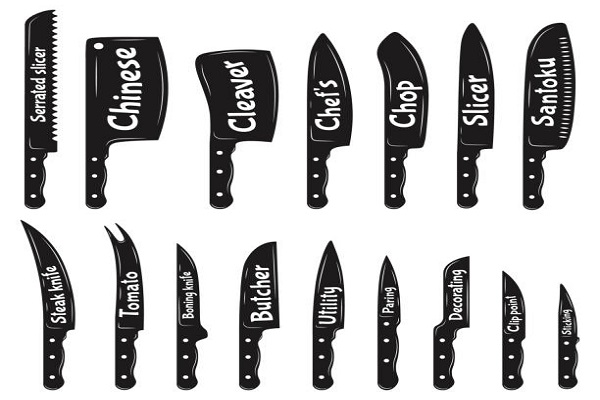The blade of a Nakiri knife is 8 inches long and 1.5 inches wide. Which is the best Nakiri knife collections? Professional Nakiri takes very good care of their knives. They are loyal to their favourite manufacturers and take good care of their knife sets. Above all, Nakiri knives have become the creative partners of professional Nakiri. Traditionally, Best Nakiri knives have been made of various alloys, but recently, ceramic knives are gaining popularity among gourmets. Here are some of the differences between steel and ceramic Nakiri knives. And who is using them?
How to Made Nakiri Knife?

- Traditionally, steel Nakiri knives are made of carbon steel, an alloy of iron and 1% carbon. The addition of carbon to iron has two effects: it makes the blade stronger and easier to sharpen.
- Some manufacturers add other elements, such as chromium or vanadium, to the alloy to prevent rusting.
- Carbon steel blades naturally tend to accumulate oxides, making it harder for the flavour of the steel to penetrate the food.
- Some Nakiri has two knives and lets one sit for a day after use to form a patina. Stainless steel is a popular choice for Nakiri knives because it is relatively inexpensive and durable. It is an alloy of iron, chromium and nickel with a small amount of carbon.
- Knives made of high-quality stainless steel tend to stay sharp longer and perform better than knives made of carbon steel.
- However, lower grade stainless steel has less lasting sharpness and should be sharpened before use.
- Ceramic knives are made by making a slurry of fine powder, which is then compressed, moulded, and fired. In the final stage of production, the blade is ground and sharpened using a hot isostatic press.
Pros
- The advantage of steel Nakiri knives lies in their durability. In addition to the inherent strength of steel, the fact that the blade extends toward the handle greatly increases the life of the knife.
- The longer lifespan means that steel Nakiri knives can be used in a wider range of applications. They can cut large, hard objects as well as frozen foods.
- Whether to use a steel knife or a ceramic knife depends on the skill of the person using it.
- Many professional Nakiri is reluctant to use ceramic knives as cookware.
- Their arrogance may be a bit ridiculous, but it comes from their rigorous technical training and pride in their profession.
- For those who enjoy cooking for family and friends, the use of ceramic knives is a delight. The slices are thinner and the knives are easier to clean.
- When you meet a professional Nakiri in the kitchen and he comments on your choice of a knife, remember whose kitchen it is.
Cons
- There are some obvious disadvantages to steel blades. The edges can quickly darken, the steel can become dirty and rusty, and because it is porous, it can transfer odours to other products.
- There is no stainless steel or stainless steel knife that will not rust.
- However, with proper care, you can prevent iron knives from discolouring and rusting.
- Hand wash and dry immediately after use. Do not put the knife in the dishwasher.
- Soap leaves a film on the iron that can penetrate the food and cause rust. Also, shaking the knife may cause the handle to come off.
- For safe use, it is important to keep the knife in a balanced position. If the blade is not secured to the handle, it can easily cut you.
- The biggest disadvantage of ceramic knives is that they scratch more easily than steel Nakiri knives. If you drop it or wash it in the dishwasher, it can break. Very often, if you are not careful right away, the tip will break off and fall into your food.
Conclusion
Since ceramic knives are made of man-made materials, they are more expensive than traditional steel knives. For professional cooks, ceramic knives are not practical. However, gourmets appreciate the fact that they rarely need to sharpen their knives and that ceramic is non-porous.
Final Words
Since the blade is non-porous, there is no risk of discolouration or rust, and the flavours of the food will not transfer to other ingredients.
Read: Sharp Knife Features: What are the Ideal Damascus Steel Kitchen Knife?

